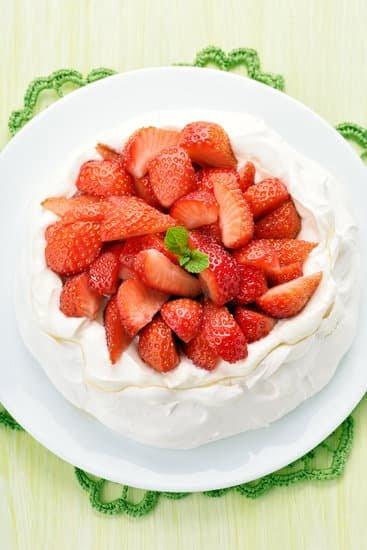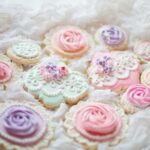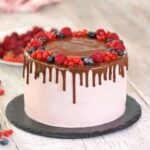When it comes to decorating a cake, there are numerous options to choose from. However, one common query that often arises is whether it’s possible to put fondant decorations on a buttercream cake. This article aims to shed light on this topic and provide insight into the compatibility of these two popular cake finishing techniques.
There can be some confusion and doubt surrounding using fondant on a buttercream cake, as both techniques offer distinct textures and characteristics. Many worry about the stability and longevity of fondant decorations on a soft buttercream surface. However, with proper preparation and technique, it is indeed possible to achieve beautiful results when combining the two.
In order to ensure successful outcomes, it is crucial to understand the key differences between fondant and buttercream icing. By exploring their contrasting textures and characteristics, we can better comprehend the challenges that may arise when incorporating fondant decorations on a buttercream cake. Additionally, this article will discuss important factors such as proper cake preparation, techniques for adhering fondant to buttercream, creating flawless finishes, and troubleshooting common issues that may arise.
By following the provided tips and techniques in this article, you’ll have the confidence to experiment with your own designs while maintaining the integrity of both your buttercream cake base and fondant decorations. So let’s dive into the world of combining fondant and buttercream icing for stunning cakes that will surely impress any occasion or celebration.
Fondant vs. Buttercream
Fondant and buttercream are two popular choices for cake decorations, each with its own unique characteristics and considerations. Understanding the key differences between fondant and buttercream can help determine the best approach when combining the two on a cake.
Fondant, often described as a smooth and pliable icing, is made primarily from sugar and gelatin. It provides a flawless finish and allows for intricate designs and decorations. On the other hand, buttercream is a creamy and rich frosting made from butter, powdered sugar, and flavorings. Buttercream gives cakes a soft texture and a delicious taste.
When considering whether to put fondant decorations on a buttercream cake, it’s important to weigh the pros and cons. Fondant provides a sleek appearance and allows for more intricate designs that may be difficult to achieve with buttercream alone. However, some people prefer the taste of buttercream over fondant, which can have a sugary or chewy texture.
Combining fondant decorations with a buttercream cake does present some challenges. The contrasting textures of fondant and buttercream can cause issues such as air bubbles or bulging if not properly adhered. One solution is to ensure that the cake is properly chilled before adding fondant decorations, which helps prevent any potential melting or sagging.
To address these challenges, it’s important to properly prepare both the cake and the fondant before applying it to the cake. This includes creating a stable base by leveling and smoothing the buttercream surface, as well as kneading and rolling out the fondant evenly to avoid any tears or cracks. Additionally, applying a thin layer of buttercream on top of the cake before adding fondant helps create better adhesion between the two elements.
How to ensure a stable base
Step-by-step instructions for baking, cooling, and icing a buttercream cake
Before applying fondant decorations on a buttercream cake, it is crucial to establish a solid foundation. This starts with properly baking and cooling the cake, followed by icing it with buttercream. Here is a step-by-step guide on how to prepare the perfect base for your fondant creations:
- Baking the cake: Begin by selecting or preparing a cake recipe that will provide a sturdy and stable structure for your decorations. Avoid recipes that are too light or delicate as they may not support the weight of the fondant. Once baked, allow the cake to cool completely before proceeding.
- Leveling and filling: Use a serrated knife or cake leveler to trim off any uneven tops or domed areas of the cake layers. This will ensure a smooth surface for your buttercream icing. If desired, you can also create multiple layers by adding fillings such as flavored buttercream, ganache, or fruit preserves between each layer.
- Crumb coating: Apply a thin layer of buttercream all over the cake to seal in any crumbs and provide an even surface for your final layer of icing. Use an offset spatula to spread the buttercream smoothly and remove any excess.
- Final coat of buttercream: Once the crumb coat has set (this usually takes 10-15 minutes in the refrigerator), apply a final, thicker layer of buttercream over the entire cake using an offset spatula or bench scraper. Smooth out any imperfections while maintaining an even thickness throughout.
Key factors that contribute to a stable base for fondant decorations
To ensure stability for your fondant decorations and prevent them from sagging or sliding off the cake, there are several key factors to consider during preparation:
- Buttercream consistency: The buttercream should be firm enough to hold its shape and provide a solid base for the fondant. Avoid an overly soft or runny buttercream, as it may not provide sufficient support.
- Chilling the cake: After the final layer of buttercream has been applied, refrigerate the cake for at least 30 minutes or until the buttercream is firm to the touch. This will help create a stable surface for applying fondant.
- Smooth surface: Ensure that the buttercream is smooth and free from any lumps or bumps before adding fondant. Use a spatula, scraper, or even a Viva paper towel to gently smooth the icing.
- Even thickness: When applying buttercream, aim for an even thickness across the entire cake. Uneven spots can cause instability when adding fondant decorations.
- Size of decorations: Consider the weight and size of your fondant decorations in relation to the cake’s size and structure. Large, heavy decorations may require additional support beneath them, such as dowels inserted into lower cake tiers.
Tips and tricks to create a smooth and leveled buttercream surface
Creating a smooth and level surface on your buttercream cake is essential for achieving professional-looking results with fondant decorations. Here are some tips and tricks to help you achieve perfection:
- Offset spatula or bench scraper: Use these tools to easily spread and level your buttercream icing across the cake’s surface. Hold the spatula or scraper perpendicular to the cake while applying gentle pressure and smoothing motions.
- Turntable: Place your cake on a turntable for easier rotation while spreading and smoothing the buttercream. This allows you to maintain even pressure around all sides of the cake effortlessly.
- Hot water method: Dip an offset spatula or bench scraper into hot water, wipe off any excess water with a kitchen towel, then use it to smooth out imperfections in your buttercream. The heat from the spatula helps to melt and smooth the buttercream, giving it a flawless finish.
- Viva paper towel method: Gently press a piece of Viva brand paper towel onto the buttercream surface immediately after smoothing to create a polished effect. Avoid using textured or patterned paper towels as they may leave imprints on the icing.
By following these steps and techniques, you can ensure that your buttercream cake provides a stable base for fondant decorations. With a smooth, level surface, you are ready to move on to the next step of applying fondant and bringing your creative vision to life.
Enhancing the bond
To successfully apply fondant decorations on a buttercream cake, it is crucial to create a strong bond between the two. This section will discuss different methods for adhering fondant to buttercream and offer expert techniques to achieve a flawless finish.
One popular method for enhancing the bond between fondant and buttercream is by applying a thin layer of buttercream icing on the cake before covering it with fondant. This layer serves as an adhesive, allowing the fondant to stick securely to the cake. It also helps to smooth out any imperfections on the surface of the cake.
When applying the buttercream layer, it is important to ensure that it is thin and evenly spread across the entire cake. An offset spatula or a cake scraper can be used to achieve a smooth and leveled surface. Excess buttercream can be gently scraped away using these tools.
Another important technique for achieving a flawless finish when working with fondant on a buttercream cake is eliminating air bubbles. Air bubbles trapped between the cake and fondant can cause unsightly bulges and wrinkles. To prevent this, gently smooth out the fondant from the center to the edges of the cake, using your hands or a fondant smoother tool. This will help eliminate any air pockets.
To summarize:
- Apply a thin layer of buttercream icing on the cake before covering it with fondant.
- Ensure that the buttercream layer is thin and even, using an offset spatula or cake scraper.
- Smooth out any air bubbles by gently smoothing the fondant from the center to the edges of the cake using your hands or a fondant smoother tool.
By following these techniques, you can enhance the bond between fondant and buttercream, resulting in a visually appealing and professionally finished cake.
| Methods for Enhancing Bond | Benefits |
|---|---|
| Applying a thin layer of buttercream icing on the cake before covering it with fondant | Serves as an adhesive and helps to smooth out imperfections |
| Ensuring the buttercream layer is thin and even | Provides a stable and level surface |
| Eliminating air bubbles by smoothing the fondant from the center to the edges of the cake | Prevents unsightly bulges or wrinkles caused by trapped air pockets |
The art of fondant decorations
Creating and applying fondant decorations requires a certain level of skill and creativity. Whether you are a beginner or a seasoned baker, this section will provide you with inspiration and guidance on how to create beautiful edible embellishments that will complement your buttercream cake.
Inspiration and Ideas
One of the benefits of using fondant for cake decorations is the endless possibilities it offers in terms of design. Fondant can be molded, shaped, and colored to match any desired theme or aesthetic. When brainstorming ideas for fondant decorations, consider the overall theme or occasion for your cake.
For example, if you are making a birthday cake for a sports enthusiast, you could create fondant soccer balls, basketballs, or baseball gloves as decorative elements. Alternatively, if you are designing a wedding cake, delicate fondant flowers or intricate lace patterns can add an elegant touch.
Techniques for Molding, Shaping, and Coloring Fondant
To bring your fondant decorations to life, it’s important to master the techniques of molding, shaping, and coloring fondant. Start by kneading the fondant until it becomes soft and pliable. Dust your work surface with powdered sugar or cornstarch to prevent sticking. Use rolling pins and various cookie cutters to shape your desired designs. If you want more intricate shapes or details, consider investing in specialized molds or cutters.
When it comes to coloring fondant, gel-based food coloring works best as it provides vibrant colors without altering the consistency of the fondant. Add small amounts of food coloring at a time and knead until fully incorporated. Remember that colors tend to deepen over time so start with lighter shades if required.
Attaching Fondant Decorations onto a Buttercream Cake
Before attaching your fondant decorations onto the buttercream cake, make sure that the cake is completely cooled down to prevent the buttercream from melting. Once the cake is ready, you can adhere the fondant decorations using edible glue or a thin layer of buttercream.
Edible glue typically consists of water mixed with tylose powder or gum-tex, which creates a sticky adhesive substance. Brush a small amount of edible glue onto the backside of your fondant decoration and gently press it onto the buttercream surface.
If you prefer to use buttercream as an adhesive, remember to apply a thin layer over the area where you want to place your fondant decoration. This will help create a stable surface and prevent any air bubbles from forming. Smooth down the buttercream with an offset spatula or smoother before attaching the fondant decoration.
Remember that practice makes perfect, so allow yourself room for trial and error when experimenting with different design techniques. With a little bit of creativity and patience, your fondant decorations will enhance the overall aesthetic of your buttercream cake, creating a show-stopping centerpiece for any occasion.
Maintaining freshness and taste
When it comes to decorating a buttercream cake with fondant, one important concern is how to maintain the freshness and taste of the cake. Many people worry that adding a layer of fondant on top of the buttercream will compromise the flavor or make the cake dry. However, with proper techniques and storage methods, it is possible to preserve the integrity of a buttercream cake with fondant decorations.
To ensure that your decorated buttercream cake stays fresh, it is important to store it in the right conditions. Ideally, the cake should be kept at room temperature in a cool and dry environment. Avoid placing it near appliances that generate heat or in direct sunlight, as this can cause the fondant to melt or become too soft.
Another option is to store the decorated cake in the refrigerator, but take caution as refrigeration can affect both the texture and taste of buttercream. If you choose this method, make sure to tightly cover the cake with plastic wrap or place it in an airtight container to prevent any moisture from reaching it.
It’s also important to note that while preserving freshness is crucial, maintaining taste is equally essential. The combination of fondant and buttercream can sometimes result in a sweet overload for some individuals. To balance out flavors, consider using fillings like fruit preserves or pastry cream between layers of your cake. These fillings not only add moisture but also introduce different flavors that complement both the fondant and buttercream.
By following these storage guidelines and tips for balancing flavors, you can be confident that your buttercream cake with fondant decorations will not only look beautiful but also taste delicious even after several days.
- Store decorated cakes at room temperature in a cool and dry environment
- Avoid placing cakes near appliances generating heat or direct sunlight
- If refrigerating, tightly cover the cake with plastic wrap or place it in an airtight container
- Consider using fillings such as fruit preserves or pastry cream to balance out flavors
Troubleshooting common issues
When it comes to decorating a cake with fondant on top of buttercream icing, there can be some challenges that arise. It’s important to be prepared and know how to address these common issues so that your cake turns out as flawless as possible. This section will discuss some of the most common problems encountered when using fondant on a buttercream cake and provide solutions and preventive measures to overcome them.
One common issue that can occur is sweating of the fondant. This happens when moisture from the buttercream seeps through the fondant, causing it to become sticky and possibly even melt. To prevent this, make sure your cake has completely cooled before applying the fondant.
Additionally, avoid placing the cake in a humid environment, as high humidity can contribute to sweating. If sweating does occur, you can try lightly dusting cornstarch or powdered sugar over the affected areas to absorb excess moisture.
Another challenge is bulging of the fondant, which can happen when air or gas becomes trapped between the buttercream frosting and the fondant layer. To prevent bulging, it’s crucial to ensure that your buttercream layer is smooth and level before applying the fondant.
Take time to smooth out any imperfections in the buttercream and use a spatula or scraper for an even surface. Additionally, gently press out any air bubbles that may have formed while applying or smoothing out the fondant.
Lastly, melting of the fondant decorations can be an issue if they are exposed to excessive heat or direct sunlight. It’s essential to store your decorated buttercream cake in a cool and dry place until ready to serve. If you need to transport the cake during warmer weather or in hot conditions, consider using a chill pack or ice pack in a closed container to help maintain its stability.
In summary, troubleshooting common issues that may arise when using fondant on a buttercream cake is important to achieve a professional-looking result. By being aware of the potential challenges and following the provided solutions and preventive measures, you can create a stunning cake that will impress your guests.
| Common Issues | Solutions |
|---|---|
| Sweating of fondant | – Ensure cake is completely cooled before applying fondant
|
| Bulging of fondant | – Ensure buttercream layer is smooth and level before applying fondant
|
| Melting of fondant decorations | – Store decorated cake in a cool and dry place until ready to serve
|
Conclusion
In conclusion, the answer to the question “Can I put fondant decorations on a buttercream cake?” is a resounding yes.
Despite the common misconceptions and doubts surrounding this combination, with proper preparation and techniques, it is absolutely possible to achieve beautiful and seamless results.
Throughout this article, we have explored the differences between fondant and buttercream, discussed the challenges and potential solutions when incorporating fondant decorations on a buttercream cake, provided step-by-step instructions for preparing and icing a buttercream cake, shared expert tips for applying a layer of fondant, offered inspiration for fondant decorations, addressed concerns about freshness and taste preservation, troubleshooting common issues, and more.
With the right knowledge and practice, anyone can successfully create stunning designs by combining these two elements. It’s important to remember that achieving a stable base is crucial.
Taking your time to properly bake and cool the cake as well as providing a smooth surface for the fondant layer will ensure the best results. Additionally, using different methods for adhering fondant to buttercream such as utilizing a thin layer of buttercream under the fondant will create a strong bond that will prevent air bubbles or slippage.
Lastly, while it is essential to follow the suggested techniques and tips provided in this article for successful results, don’t be afraid to experiment with your own designs. Get creative with shapes, colors, textures of both the fondant decorations and buttercream base.
Remember that practice makes perfect; so keep honing your skills until you achieve your desired look. As long as you follow these guidelines and maintain an open mind for troubleshooting any potential issues along the way, combining fondant decorations with a buttercream cake can result in breathtaking creations that are both visually appealing and deliciously satisfying.

Welcome to our cake decorating blog! My name is Destiny Flores, and I am the proud owner of a cake decorating business named Cake Karma. Our mission is to provide delicious, beautiful cakes for all occasions. We specialize in creating custom cakes that are tailored specifically to each customer’s individual needs and tastes.





